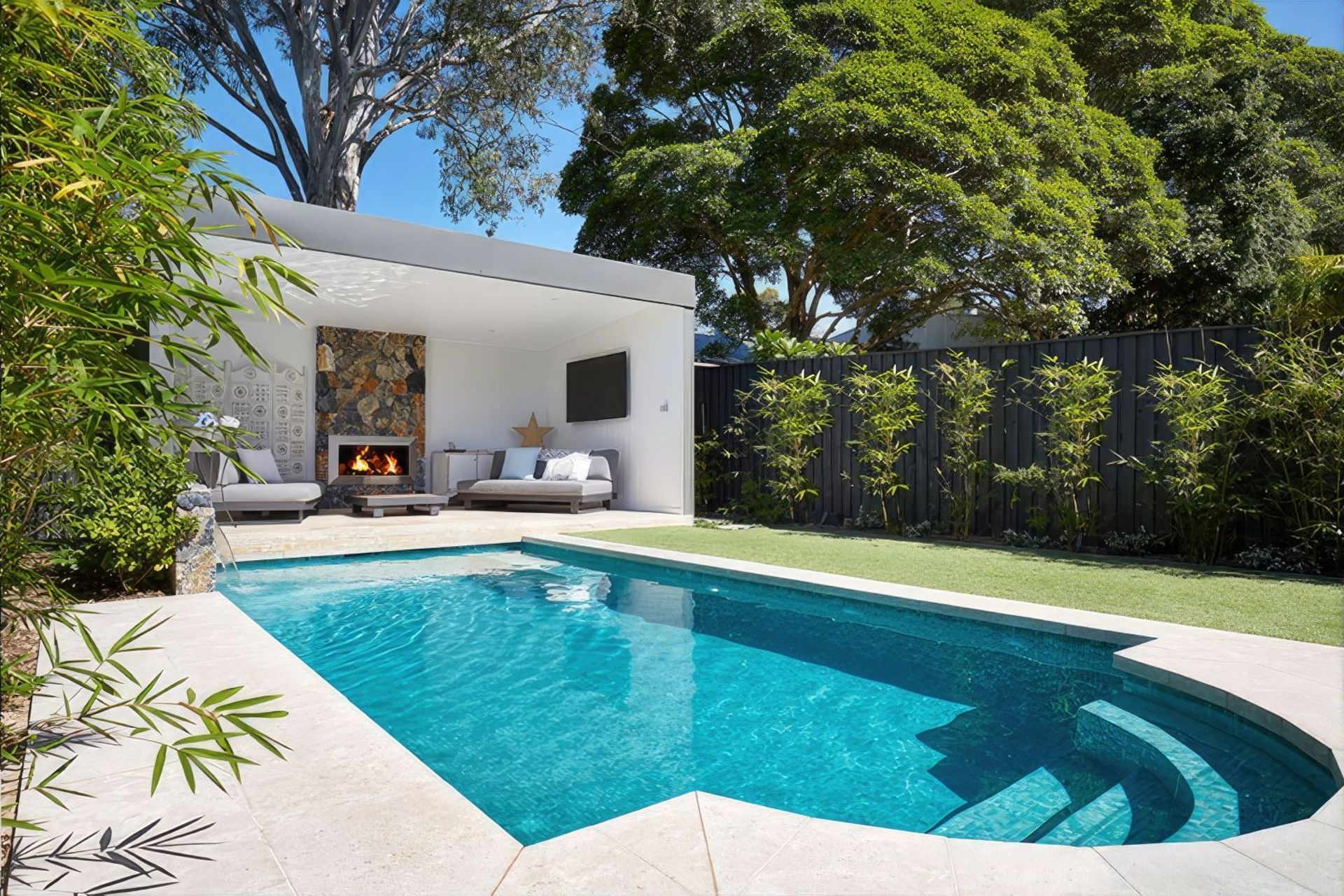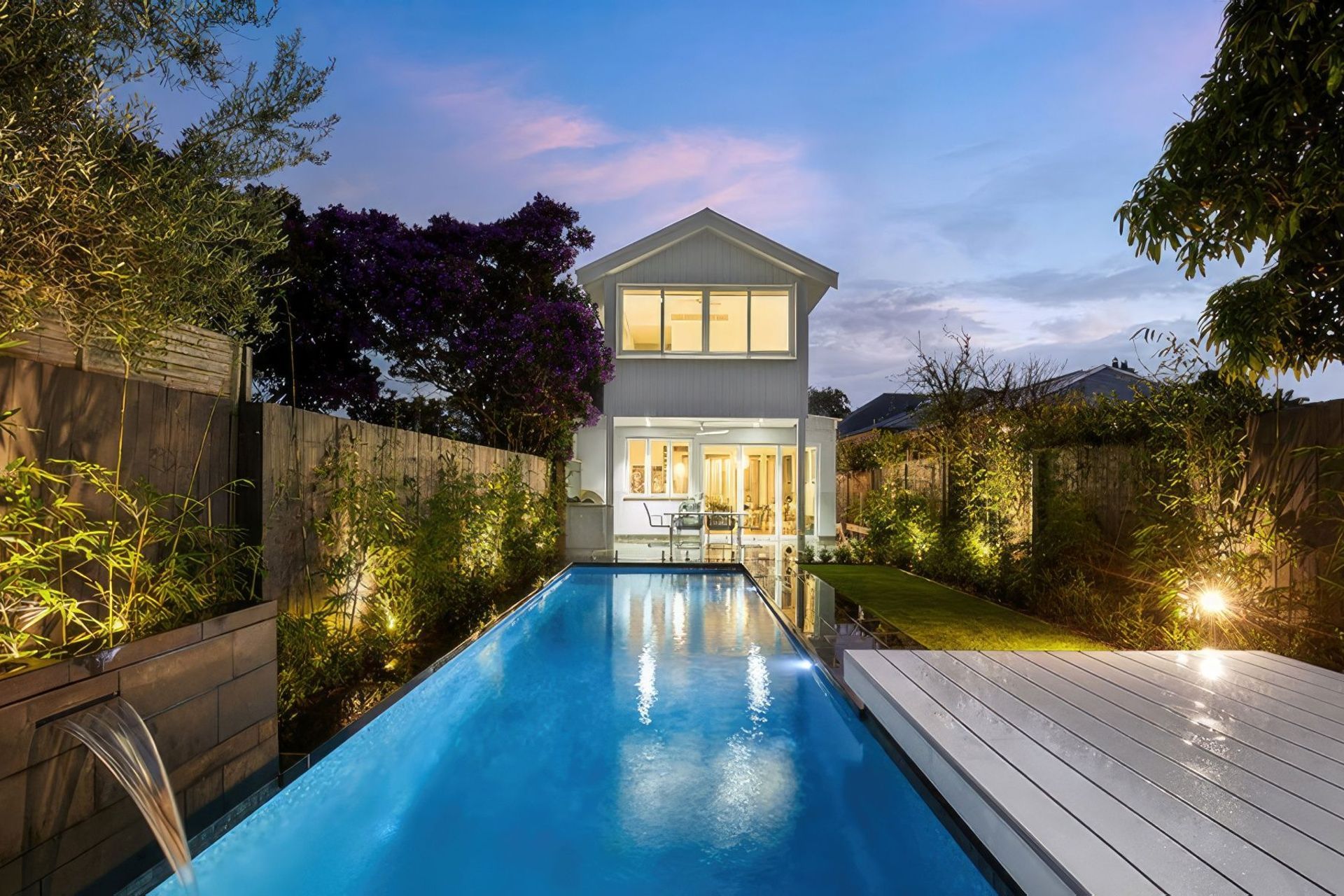How well-designed outdoor living spaces add value to your home
Written by
12 April 2025
•
8 min read
A great outdoor space that truly adds value to a home is a culmination of features and qualities that come together through thoughtful design. While each project will be personalised to some extent, there are certain elements and additions that the best spaces will have, which is good to know if you’re planning one for yourself.
Tim and Andrea from TSD Group, a design and build company based in Sydney, have over 20 years of collective experience working on these projects and share some fascinating and helpful insights on what to look out for.
Key ingredients for outdoor spaces that add value
1. Indoor-outdoor flow
Perhaps the most important design feature of a modern outdoor space in Australia is having good indoor-outdoor flow. A seamless transition from indoors to outdoors makes an outdoor space a natural extension of the home, as opposed to a separate addition.
As Tim explains, this has been one of the biggest changes from traditional home design to new.
“Older homes would have a single 800mm doorway to funnel people from the internals to the externals. That's no longer the case. Now, it’s big stacking doors and big bifold doors. When you open up the doors, it's an extension of the indoor room. Another thing is heights and having flush transfers, so having external levels the same as the internal levels, and that comes down to good building practices.”
Head Designer Andrea agrees wholeheartedly with this sentiment.
“If you have the flow from internal to external, you open up the doors and all of a sudden you might have double the footprint of space, because it's just a continuation what you've got already, ideally with a continuation of the material as well.”
2. Shade and shelter
High-quality shade and shelter are crucial, especially in a country like Australia, which can experience extreme weather conditions at different times of the year. This allows you to get more use from your outdoor spaces during these times. It’s something Tim ranks very highly as a feature to prioritise.
“Weather protection is massive. Obviously, if you're not protected, you're not going to go outside. And the beauty about having an overhead structure is that you can place heaters, you can place fans, you can put your skylights in to get the natural light back into the house.”
As Tim elaborates, shade and shelter solutions often have the added benefit of providing a bit of privacy in the form of screening, especially in dense urban areas.
“We do a lot of work in Sydney in the inner west, and that's notorious for tight properties. Adding screening does offer privacy from your neighbours and that feeling that you're in your own separate oasis.”
3. Swimming pools
Swimming pools have always been popular in Australia and really set the scene for an idyllic outdoor space. It’s also a great social and leisure focal point for friends and family to enjoy and a relaxing way to cool off in the summer.
Tim concedes that they are a considerable investment, but with a measured approach, you can certainly reap the rewards.
“Spas and pools are a big thing, but not necessarily huge pools because with huge pools comes huge maintenance and servicing. With smaller pools you have less servicing, less chemicals and often it's enough for families, just to get wet, feel cool and refreshed. They double as a water feature as well, and with lights you can look out upon the pool and you see the glistening water at night.”

4. Outdoor kitchens
The concept of the outdoor kitchen has also transformed in recent years from what was once a humble charcoal grill to what can now be a fully equipped kitchen. This elevates an outdoor space into an immersive entertaining area where the host can cook and still interact with their guests. It adds a tremendous amount of convenience without the need to constantly move between indoor and outdoor spaces with food. It also adds great ambience with the crackling off the grill and the aromas in the air.
As Tim explains, there is no shortage of products available to tailor an outdoor kitchen to your liking.
“Obviously barbecues, fridges all stacked up, teppanyaki plates, pizza ovens, all those sorts of things go with outdoor cooking.”
5. Lighting
A common theme of this selection so far is features that enable you to get more out of your outdoor space. Lighting falls directly into this category, providing pivotal illumination for safety and extended use into the evenings. It can also be highly decorative, creating an atmosphere with depth that can captivate the eye.
Andrea says that it’s something that probably deserves more attention than it gets.
“I think it’s something that's kind of underrated, but it makes a huge difference to have a proper lighting plan for the backyard. It's the same concept you would create in a living room, or any other room in the house, where you have just a cosy corner to hang out and entertain people. You want to create the same in your backyard if you want to enjoy it as your extended living space.”

6. Landscaping
Most people these days understand how crucial landscaping is to any outdoor space, especially when the land is sloped and options like decking, terracing and retaining walls are called for to make them usable.
The garden should also be included in your plans to complete the vision. In Andrea’s experience, these are the final touches that can bring everything together, but in doing so, you also need to make sure it’s maintainable going forward.
“That's part of our holistic plan to make an enjoyable outdoor living space. You want greenery, you want softness, you want that foliage throughout the garden. People love taking care of their gardens but a lot of people don't have time to maintain their gardens. So, we try to find that perfect outcome for them to bring it all together.”
7. Eco-friendly future proofing
Another aspect that has become increasingly important is sustainability, something that permeates most projects in various ways. It’s an area with huge potential, and having recently completed certification for passive house design and construction, it’s something that Tim speaks about passionately.
“People are aware that you don't go for certain timbers because they're not sustainable timbers. Composite decking is a big thing, using recycled plastics, which means less maintenance, long lifespan, fewer chemicals etc. It also includes design considerations that best utilise the conditions. So, if there was a prevailing wind that offered a nice breeze, you would place the main sitting area outside in that position. That way they don't have to necessarily use a fan for as much cooling. Things like endemic and drought tolerant plants, veggie gardens, water harvesting to reduce runoff into the streets. We’ve also been putting a lot of EV chargers in.”

Pitfalls to be aware of from the outset
While understanding the key features that lead to well-designed outdoor spaces is crucial, one should also be aware of the pitfalls that can catch people off guard during their projects. Tim says that a balanced, holistic approach is often the best way to avoid future issues.
“I think one big thing is making sure you’re not going for that big ostentatious pool or anything like that. An oversized pool in a small backyard would probably be to the detriment of your resale because if you’ve got a pool that occupies most of the backyard, you’ve got no other space for dogs and kids, and it can be a bad idea.”
The quality of the professionals you choose is obviously important, and Andrea says, getting them involved early with the planning will also make the process much smoother and potentially more cost-effective in the long term.
“I think you should get involved with an expert early. Be organised, think through what you want to achieve long-term, and get someone to advise you on the steps. In the end that's what saves you time, money and headache.”
She also explains that all-inclusive packages are good ways to avoid cost blowouts that many homeowners rightly get anxious about.
“We try to be as transparent as possible and give you an all-inclusive package. Some companies might give you itemised pricing and tell you about the cost of the build, but they leave out all the surrounding areas. You have to get your home to a point where you can actually start enjoying it. We give you that holistic understanding of what's involved to get you over the finish line.”
Tim also makes a strong case for choosing a design and build company to simplify processes and align the design and build aspects of the project.
“The beauty of being a design and build company is that we can design mindfully and accordingly to a budget, as opposed to having a beautiful design and then not being able to afford it. Getting a designer and builder involved early on is crucial, and that just happens by virtue of the fact that you’re engaging with us as a design and build company.”